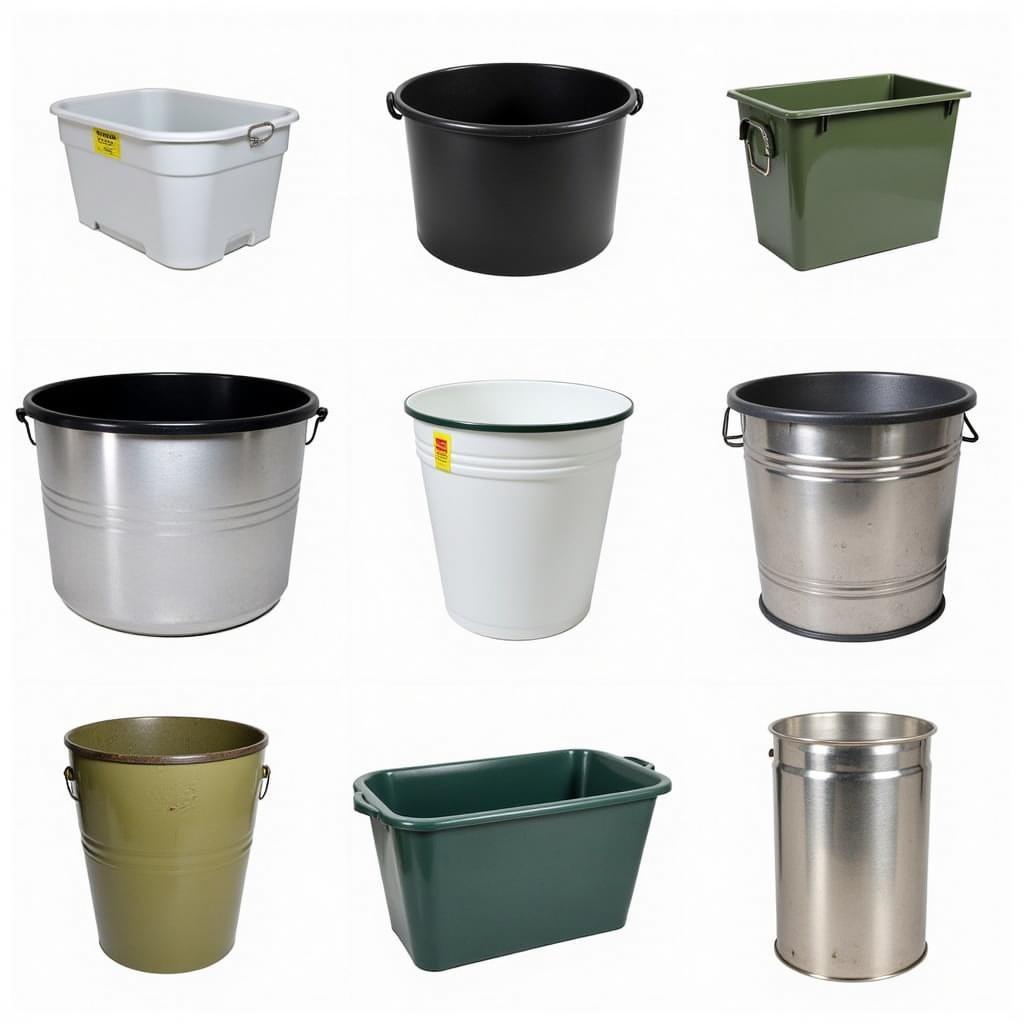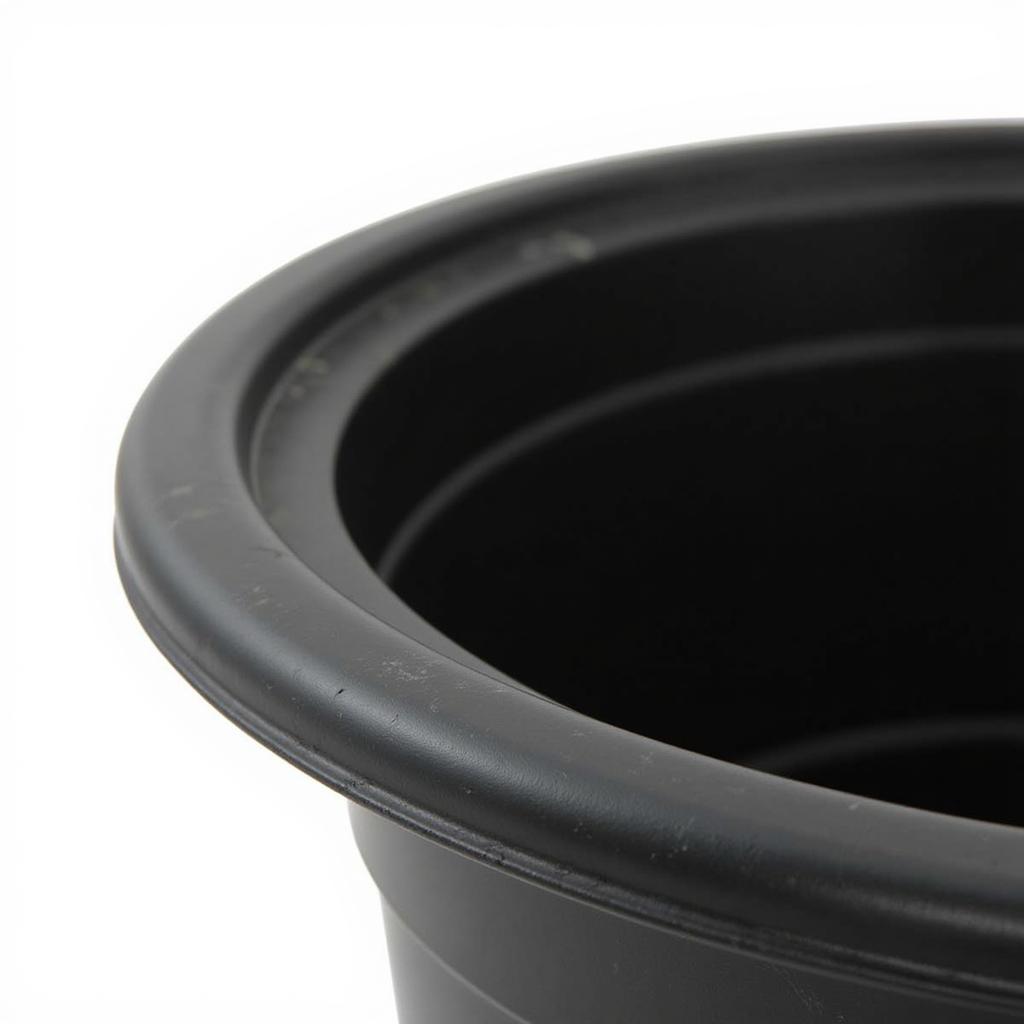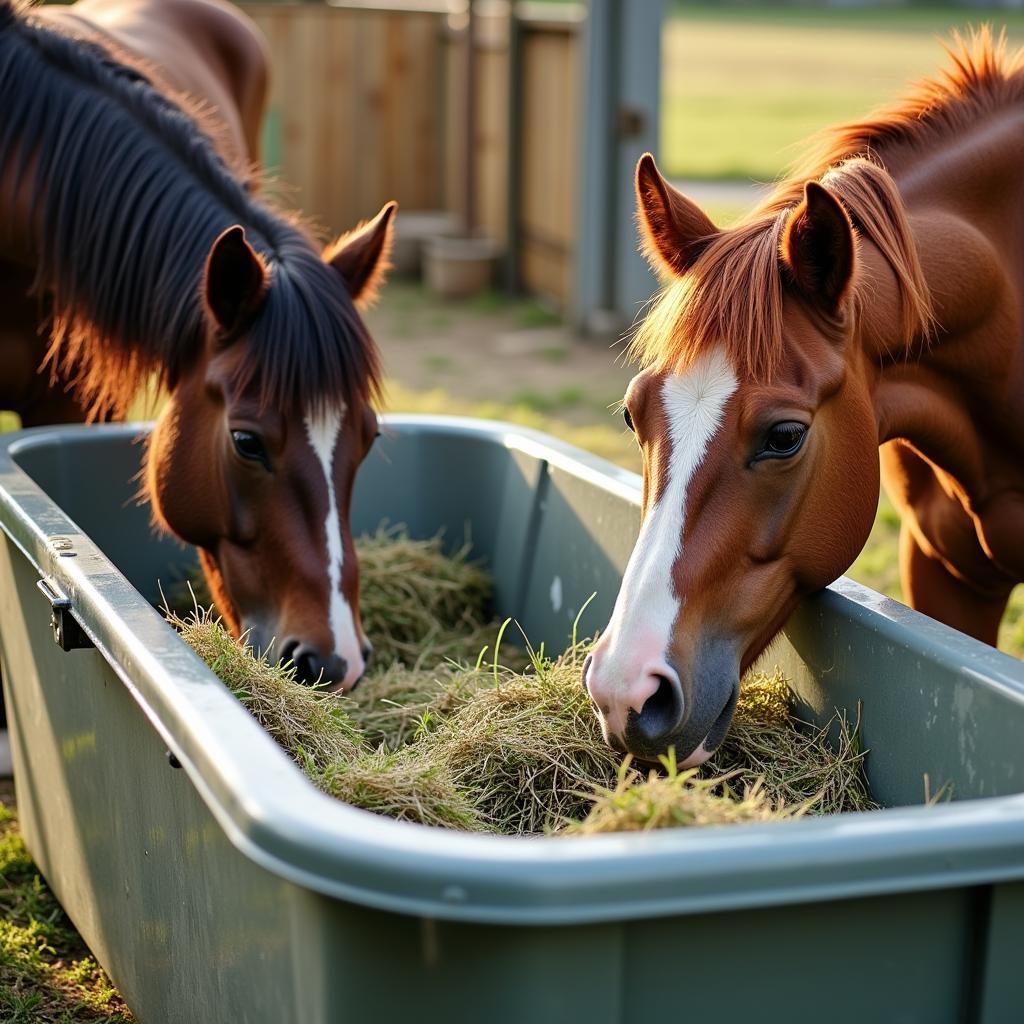Feeding tubs are an essential part of any horse owner’s equipment. They provide a designated space for your horse to eat, minimizing waste and promoting good eating habits. With a variety of materials, sizes, and designs available, choosing the right feeding tub for your horse can seem daunting. This guide explores the key factors to consider when selecting Feeding Tubs For Horses, ensuring your equine companion enjoys a comfortable and hygienic dining experience.
 Different Types of Horse Feeding Tubs
Different Types of Horse Feeding Tubs
Understanding Your Horse’s Needs
Before you start shopping for horse feeding tubs, consider your horse’s specific requirements:
- Size and Breed: Larger horse breeds naturally require larger tubs to accommodate their feed portions. Miniature horses, on the other hand, thrive with smaller-sized tubs.
- Eating Habits: Does your horse tend to gobble down food or eat at a leisurely pace? For fast eaters, consider a slow feeder tub designed to reduce the risk of choking and digestive issues.
- Special Needs: Horses with dental problems, such as missing teeth or difficulty chewing, may benefit from shallow tubs that allow easier access to feed.
Exploring Feeding Tub Materials
Feeding tubs are typically made from rubber, plastic, or metal. Each material has its own set of advantages and disadvantages:
Rubber Feeding Tubs
Pros: Durable, long-lasting, resistant to cracking and breaking, easy to clean.
Cons: Heavier than plastic tubs, can be more expensive.
 Durable Rubber Horse Feeding Tub
Durable Rubber Horse Feeding Tub
Plastic Feeding Tubs
Pros: Lightweight, affordable, available in various colors and sizes.
Cons: Less durable than rubber or metal, may crack in extreme temperatures.
Metal Feeding Tubs
Pros: Extremely durable, easy to sanitize, often rust-resistant.
Cons: Can be noisy, may dent or scratch, can get very hot or cold depending on the weather.
Choosing the Right Size and Design
Feeding tubs come in a range of sizes, from small tubs suitable for individual feedings to large tubs designed for group feeding. Consider your horse’s size and the amount of feed it needs per meal.
Tip: When in doubt, it’s always better to opt for a slightly larger tub than you think you need.
The design of the tub can also impact your horse’s eating experience.
- Rounded edges: Prevent feed from getting trapped and reduce the risk of injury.
- Elevated tubs: Can help horses with respiratory issues breathe easier while eating.
- Corner feeders: Ideal for maximizing space in stalls and trailers.
Maintaining Your Horse’s Feeding Tubs
No matter what type of feeding tub you choose, regular cleaning is crucial for maintaining your horse’s health.
- Remove any leftover feed after each meal.
- Scrub the tub thoroughly with soap and water at least once a week.
- Allow the tub to dry completely before adding fresh feed.
 Importance of Clean Horse Feeding Tub
Importance of Clean Horse Feeding Tub
Conclusion
Selecting the right feeding tubs for horses involves considering your horse’s individual needs, budget, and management preferences. By prioritizing durability, ease of cleaning, and your horse’s comfort, you can provide a positive and healthy feeding experience. Remember, a well-chosen feeding tub not only serves a practical purpose but also contributes to the overall well-being of your equine companion.
For more information on horse care, check out our guide on horse feed bins.
FAQ
1. How often should I clean my horse’s feeding tub?
It’s best to scrub your horse’s feeding tub with soap and water at least once a week. Daily removal of leftover feed is also recommended.
2. What is the best material for a horse feeding tub?
Rubber, plastic, and metal are all suitable materials. The best choice for you depends on your budget and preferences. Rubber offers durability, plastic is lightweight, and metal is easy to sanitize.
3. Can I leave a feeding tub outside in the winter?
Yes, but be mindful of extreme temperatures. Plastic tubs may become brittle and crack in freezing weather, while metal tubs can become very cold and uncomfortable for your horse.
4. How do I prevent my horse from tipping over its feeding tub?
Consider using a heavy-duty tub or a corner feeder. You can also secure the tub to a wall or fence post using straps or brackets.
5. Do I need a separate feeding tub for hay and grain?
It’s a good practice to have separate tubs for hay and grain to prevent contamination and ensure your horse is getting the right balance of nutrients.
6. What is a slow feeder tub and does my horse need one?
A slow feeder tub has a design that encourages slower eating, which can help prevent choking and digestive upset. If your horse tends to eat quickly, a slow feeder tub may be a good investment.
7. Where can I buy high-quality feeding tubs for horses?
You can find a wide selection of feeding tubs at agricultural supply stores, feed stores, and online retailers.
Need further assistance with your horse care needs? Contact us at Phone Number: 0772127271, Email: [email protected], or visit our location at QGM2+WX2, Vị Trung, Vị Thuỷ, Hậu Giang, Việt Nam. Our dedicated customer service team is available 24/7 to assist you.